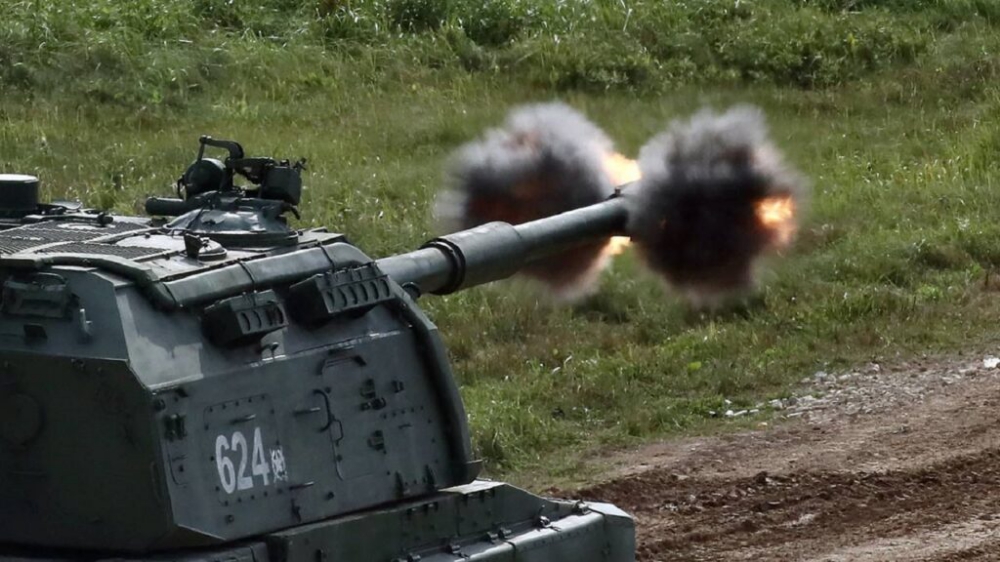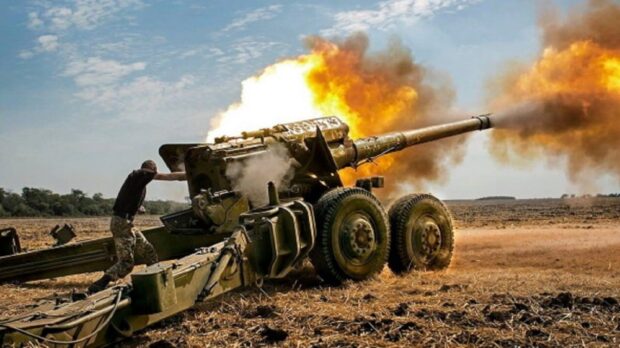In Ukraine as in previous major conflicts artillery is the biggest killer on the battlefield, accounting for perhaps 80% of casualties on both sides. But while Ukraine has fewer guns firing fewer shells, they appear to be doing more damage even though, with some notable exceptions, they are using the same weapons as their Russian opponents. How is this possible?
The Numbers Game
Russia has enjoyed a huge advantage in artillery since the start of the invasion with roughly twice as many guns and MRLs, and more importantly, massive stockpiles of ammunition. Figures vary wildly, and have changed over time, but all put Russian substantially ahead in terms of shells fired.
In November NBC quoted US officials estimating Russian expenditure of 20,000 rounds per day against 4,000-7,000 for Ukraine. NATO Secretary General Jens Stoltenberg stated in February that Russia was firing around four times as many shells as Ukraine. In March, Spanish newspaper El Pais quoted EU insider sources as saying that Russia was firing 40-50,000 rounds per day, compared to 5,000-6,000 for Ukraine, while Estonia (which has supplied shells to Ukraine) estimated that Russia was firing 20,000-60,000 per day compared to 2,000-7,000 from Ukraine.
So Russia is likely firing something between four and nine times as many shells as Ukraine.
And yet, Russia has suffered much higher casualties. To take just one figure, recently leaked Pentagon documents suggest 189,500-223,000 Russians killed or injured compared to 124,500-131,000 Ukrainians or 1.4 to 1.8 to 1.
Much of this can be accounted for by the fact that Russia’s campaign has largely been on the offensive, while Ukraine has largely been on the defensive. Yet, for long periods we have seen largely static warfare. Russia’s advantage in artillery should have been reflected in casualty figures, but this has not happened. UK defense think tank RUSI describes the Russian army as “an artillery army with a lot of tanks,” that is, one that depends on massed artillery for its striking power. In the current conflict, they appear to be outgunned by a smaller force.

A Msta-SM self-propelled howitzer fires during a field show at Patriot Park as part of the Army 2020 International Military Technical Forum. Sergei Fadeichev/TASS/Russian State Media.
Ukraine Is Killing More By Fighting Smarter
The solution to this paradox lies in the different ways that the two armies use their artillery. While Russia has stuck mainly to Soviet doctrine of massed area fires, Ukraine uses artillery fire as a long-range sniper weapon to pick off individual targets. This has been made possible with the widespread use of two innovations: small drones for artillery spotting, coupled with cheap tablet computers running software like Nettle system to direct fire.
Back in 2014, Ukrainian volunteer organization Army-SOS set out to use its technical skill to help the military. They initially helped soldiers fly and support drones, but soon found the biggest problem was using the data gathered by drone operators efficiently. So they developed Kropyva (“Nettle”) proprietary intelligence mapping software, which can run on any Android tablet.
Nettle is supplied as a tactical system compatible with NATO-standard secure communications and is used from divisional command down to individual vehicles. It maps battle lines and targets and calculates artillery fire missions. It is specifically designed to work with drones, receiving data and using it to calculate the adjustment needed. The gunner changes angle and azimuth accordingly, and shells land on target.
Several other Ukraine-developed software packages — GIS Arta, ComBat Vision, and the major Delta battlefield management system – are also used to share data, locating targets and directing fire.
Ukrainian forces use a wide variety of small drones, including several locally-made military-grade types such as the Leleka-100 and Spectator-M for artillery spotting, as well as thousands of DJ consumer quadcopters. The latter has a range of just a few kilometers and a flight endurance of perhaps half an hour, but their low cost means they are expendable and universally available.
In March 2022, Oleksiy Arestovych, adviser to the office of President Zelensky, told the media that a standard platoon defensive position took normally took 60-90 artillery rounds to destroy, but with drone-guided fire this was reduced to just 9 rounds, and that drones had been supplied to all artillery units. This suggests an improvement of a factor of 7-10, which is roughly what we see in the ratios of artillery shells: casualties above.
Previously, a vehicle, especially in a dug-in, camouflaged position or behind buildings or trees might not be detected until enemy forces were close by. Drone observation changes this, with small drones buzzing overhead spotting everything below in real time – not just vehicles but even individual soldiers. Hiding behind a ridge or hill no longer helps. Given suitable software and communications which Nettle supplies, every potential target can be geolocated precisely, the co-ordinates passed to artillery, and rounds walked on to it.
A vast number of Ukrainian drone videos show this process in operation. In previous conflicts, concentrated artillery fire was needed to damage armored units. Now individual guns can take on the same task. In July a Ukrainian soldier with the callsign ‘Balu’ told Ukraine’s Defence Express how his unit faced a platoon of dug-in Russian BMPs which they had been unable to destroy with direct fire from ATGMs. He says that with the aid of Nettle, artillery guided by a drone knocked out all three in quick succession.
Now Everything Is Artillery
This approach is not limited to traditional indirect fire artillery. Increasingly drone-enabled Ukrainian tanks are acting in an indirect fire role, engaging Russian armor beyond normal combat ranges and beyond line of sight. In August 2022, a video posted on social media showed a Ukrainian T-64BV destroying a Russian tank at a claimed range of 6.5 miles, which would make it the longest ever tank vs. tank kill. This required some twenty 125mm HE-FRAG projectiles, but the Russian could not fire back to the ‘duel’ was entirely one-sided.
While video evidence may not be conclusive, there is more evidence at present for Ukrainian tanks being used for indirect than direct fire. The same tactic has also been observed with Ukrainian BMPs firing 73mm guns aided by drones and Nettle, and even BTR-4 with 30mm automatic cannon.
Older, supposedly obsolete weapons are being transformed into effective indirect-fire platforms. Videos show 100mm T-12 Rapira anti-tank guns dating from 1961 in this role, and even a T-12 mounted on an MT-LB tracked vehicles. The 73mm SPG-9 recoilless rifle (from 1962), again originally a direct-fire anti-tank weapon, is being also used for precision indirect fire, as is the AGS-17 Plamya 30mm automatic grenade launcher. In this latter case, there does not seem to be any software, just the drone operator standing next to the gunner directing them, or in some cases the gunner observing the drone feed directly to adjust fire.
The pattern is consistent. Ukraine is rolling out drone-guided indirect fire at every level as rapidly as possible and to significant effect.
Russian forces are also using drone-directed fire, but suffer from a comparative shortage of drones, and, until now, a lack of support from senior commanders. While artillery units have long operated Orlan-10 drones, these are in short supply and only at battery level or above. Now there are signs that drone-directed fire is being adopted on a wider basis, even down to individual vehicles.
“We are learning to arc fire,” says a crewman of a T-90M tank in a video issued by the Russian MoD in February 2023. “The range of fire varies from 4 to 12 kilometers. Everything is done with the help of a drone, which monitors how a shell flies and makes adjustments in a bid to achieve maximum precision. This is a relatively new manner of shelling, which has not been practiced before.”
The difference is that the Russian system appears to use expensive military drones and software, whereas the Ukrainians have adopted commercial drones, consumer electronics and software from local start-ups at high speed.
The Future of Artillery in Ukraine and Beyond
It is difficult to predict the lasting impact of these developments. Russia has recently had more success with jamming Ukrainian consumer drones and limiting their ability to direct fire, but jam-resistant alternatives are becoming available.
If the trend continues, then the days of artillery batteries blasting away blindly at map co-ordinates may be over. And direct fire, in general, may become increasingly rare as targets are engaged beyond visual range. More advanced networked communications will see every shooter connected to multiple remote sensors. Small and increasingly autonomous drones will proliferate, and fires will be directed with ever greater speed and accuracy.
Source: 1945

